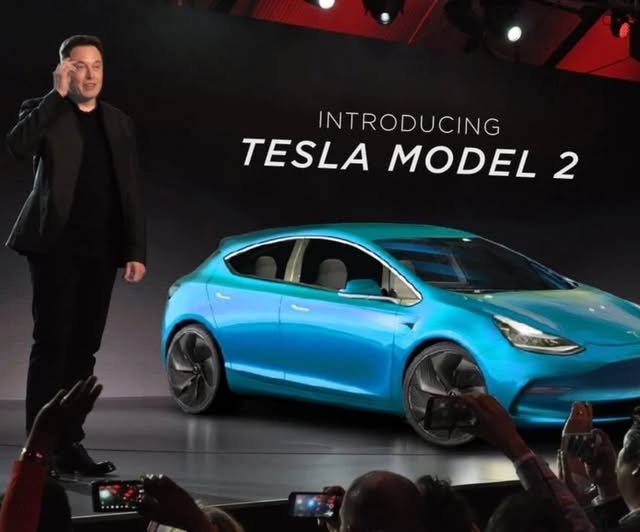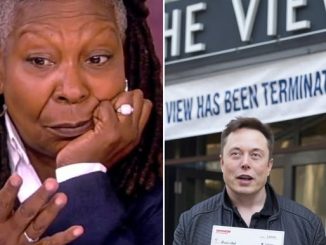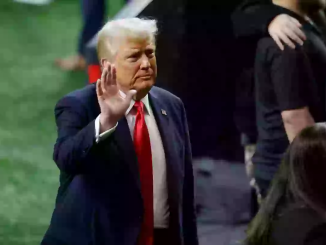In a move that could reshape the global
auto industry, Elon Musk has announced the release of a test version of the Tesla Model 2—a compact
electric vehicle priced at just $15,679. This bold strategy is more than just a pricing shock; it’s a calculated leap toward Musk’s long-standing goal of making electric vehicles (EVs) affordable and accessible to the masses. With this new model, Tesla is poised to penetrate a market segment that has remained elusive until now: younger buyers, families, and cost-conscious consumers looking for a budget-friendly entry point into sustainable driving.

Democratizing the Electric Revolution
Since Tesla’s inception, the company has followed a top-down strategy—first releasing high-end, luxury EVs like the Model S and Roadster, then gradually introducing more affordable options such as the Model 3 and Model Y. But now, with the Tesla Model 2, Musk is flipping the playbook.
At under $16,000, the Model 2 is set to compete directly with traditional internal combustion engine (ICE) vehicles and low-cost EVs from other manufacturers, particularly in growing markets like Southeast Asia, Latin America, and parts of Europe. Its affordability could finally bridge the gap between electric innovation and everyday practicality, accelerating the world’s transition to renewable transportation on a massive scale.
Designed for the Masses, Engineered for the Future
Though still in the testing phase, early specs suggest that the Tesla Model 2 will maintain the company’s commitment to performance, safety, and technology. Expected features include:
- A compact hatchback design for urban mobility
- Over 250 miles of range on a single charge
- Autopilot-ready hardware for future updates
- Full integration with the Tesla ecosystem, including the app and Supercharger network
The car is being developed with production efficiency in mind, relying heavily on Tesla’s next-gen gigacasting methods and battery innovations like the 4680 cell. This ensures lower production costs without sacrificing quality—a feat Tesla has been fine-tuning over the past few years.
The Bigger Picture: Strategic Disruption
With its disruptive pricing, the Model 2 challenges not only legacy automakers but also newer EV startups that have struggled to lower costs. Tesla’s economies of scale, vertically integrated supply chain, and massive R&D investments give it a unique advantage. And Musk’s decision to release the Model 2 during its test phase is vintage Tesla: move fast, iterate often, and build excitement.
Industry analysts view this as a potential turning point in the EV market. If Tesla can maintain margins while scaling production, the Model 2 could force automakers worldwide to rethink pricing, manufacturing, and innovation strategies—or risk being left behind.
Appealing to the Next Generation
The affordability of the Tesla Model 2 isn’t just a financial win—it’s a cultural one. Musk is targeting a new generation of eco-conscious consumers who prioritize sustainability but are priced out of traditional EV offerings. Young professionals, college students, first-time car buyers—this is the audience the Model 2 is designed for.
This demographic also lives online, and Tesla’s ability to market through viral campaigns, livestreamed events, and Musk’s massive social media presence ensures that the Model 2 will remain top of mind for digital-native consumers.
Global Reach, Local Impact
Musk has also hinted at local production hubs to manufacture the Model 2 in key markets such as India, Mexico, and Southeast Asia. These localized operations would reduce costs further, create jobs, and encourage EV adoption in regions that have yet to fully embrace electric mobility.
Such a move aligns with Musk’s broader vision for Tesla to not only build cars but also to transform infrastructure and energy use worldwide—through solar technology, battery storage, and integrated transport solutions.
What Comes Next?
Although still in the test phase, the Tesla Model 2 has already sparked global excitement. Consumers and industry watchers alike are eagerly awaiting a full production announcement, with the possibility of a late 2025 or early 2026 rollout.
Meanwhile, rival automakers are scrambling to respond. From Volkswagen’s ID series to Chinese EV brands like BYD and NIO, the pressure to innovate and cut costs has never been higher. With the Model 2, Musk has again proven his knack for shaking up complacent industries—this time, potentially ushering in the age of mass-market electric vehicles.
Conclusion: A Bold Bet That Might Just Pay Off
Elon Musk’s decision to release a $15,679 electric vehicle is more than just a pricing strategy—it’s a statement of intent. With the Tesla Model 2, he’s betting on scale, innovation, and the universal appeal of clean, affordable transport. And if the gamble pays off, we may soon see roads around the world filled with Teslas—not just for the wealthy, but for everyone.


